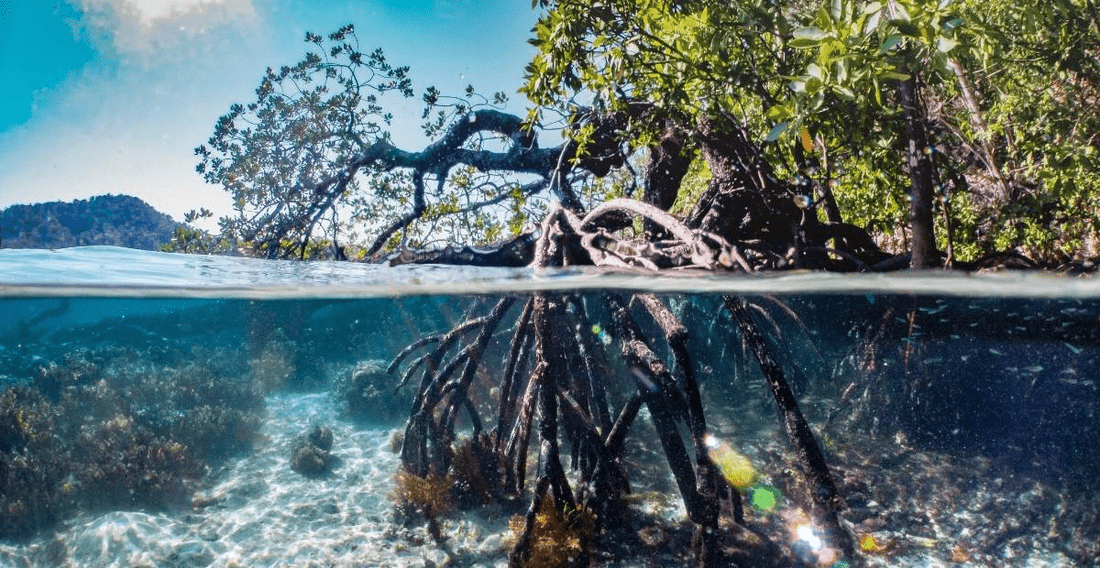
Mangroves of Costa Rica: Biodiversity and Protection
BY NAMUBAKShare
The mangroves of Costa Rica They are coastal ecosystems that play a crucial role in preserving biodiversity and combating climate change. These unique forests, located in tropical and subtropical zones, are found in more than 100 countries, but cover only 0.1% of the Earth's surface. Despite their limited size, their importance is incalculable. Throughout this blog, we'll learn what mangroves are, their functions, their biodiversity, and why we should protect them.

What are Mangroves and What Are They Used For?
The mangroves They are coastal ecosystems where freshwater and saltwater converge, forming a unique habitat that is home to a wealth of both marine and terrestrial species. These forests are composed primarily of trees called mangroves , which have special adaptations to survive in muddy and saline soils.
The mangroves of Costa Rica They perform various vital functions:
- They act as natural barriers that protect coasts from erosion and natural disasters such as hurricanes and tsunamis.
- They are an essential habitat for many species of flora and fauna, including birds, crustaceans, fish and reptiles.
- They contribute significantly to climate change mitigation, as mangroves are capable of store up to 10 times more carbon than terrestrial forests.
- They filter and retain sediments, preventing toxic substances from reaching the sea.

Characteristics of Mangroves
One of the most fascinating features of the mangroves is their ability to survive in extreme conditions, such as high salinity and oxygen-poor soils. Mangroves , the predominant trees in these ecosystems, have roots that extend both above and below the ground, allowing them to stabilize in muddy environments. Furthermore, mangroves are adapted to tidal fluctuations, an essential characteristic for survival in these types of ecosystems.
There are approximately 70 species of mangroves in the world, the most common in Costa Rica being: red mangrove , white mangrove , black mangrove and button mangle .
Flora and Fauna of the Mangroves of Costa Rica
The mangroves of Costa Rica They are a refuge for an impressive diversity of species. In these ecosystems, we find mangrove animals as:
- Crabs and shrimp , which play a key role in nutrient recycling.
- Juvenile fish , which use mangroves as nurseries before venturing into the sea.
- Birds such as herons, ducks, and macaws that migrate to these habitats in search of food and shelter.
- Alligators, crocodiles, capuchin and howler monkeys also inhabit these coastal forests.


Types of Mangroves
Mangroves can be classified into several types depending on their location and characteristics:
- Riparian : They grow on the banks of rivers and are influenced by tides and salt water.
- Edge : They are found on the shores of coasts and bays, where they withstand the continuous impact of the waves.
- From the Basin : They develop in stable soils behind riparian and edge mangroves, in areas where water renewal is slow.
- Special : They grow in extreme conditions of high salinity and low nutrient availability.
Where are Costa Rica's mangroves located?
Most of the mangroves of Costa Rica They are found along the Pacific coast, with the Térraba-Sierpe National Wetlands in the Osa Peninsula as the largest mangrove area in the country. This place houses one of the largest concentrations of biodiversity of the world. Mangroves can also be found in the estuary of the Damas Islands , near Manuel Antonio, and in the Las Baulas National Park , in Guanacaste.

Mangrove Problems
Despite their importance, mangroves are in danger. deforestation , the coastal urban development and the climate change are the main threats to their survival. According to the UN, more than a third of the world's mangroves have disappeared in the last 100 years. Protecting these ecosystems is essential, not only for their ecological value, but also for the benefits they offer in the fight against climate change.
Why Should We Take Care of Mangroves?
Protect the mangroves of Costa Rica It is essential for several reasons:
- Carbon storage : Mangroves are highly effective carbon sinks, contributing to climate change mitigation.
- Coastal protection : They act as natural barriers against storms, tsunamis and coastal erosion.
- Sustainability : They are the basis of many local economies, which depend on fishing and ecotourism in these areas.

The mangroves of Costa Rica They are one of the most valuable and unique ecosystems in the world. Not only are they home to incredible biodiversity, but they are also essential for protecting our coasts and mitigating the effects of climate change. Protecting these ecosystems is a global challenge that Costa Rica has taken on with commitment, but much remains to be done. By visiting mangroves or supporting their conservation, we can help preserve this valuable natural treasure for future generations.

